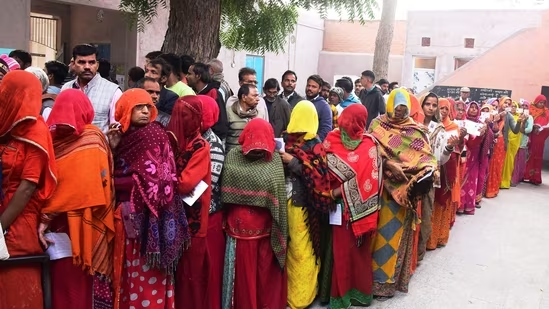
As the results of the legislative assembly elections in Rajasthan and four other states loom on the horizon, the air is thick with speculation. The exit polls scheduled for Thursday and the election outcomes on December 3 have everyone guessing which party, Congress or BJP, will emerge with a clear mandate.
In the largest state geographically, Rajasthan, political observers have been pondering over whether the age-old tradition of power changing hands every five years will persist, or if a surprising shift is on the horizon. In the last three decades, Rajasthan has witnessed a unique pattern of alternating between Congress and BJP governments, creating a sense of uncertainty every election cycle.
Analysts, grappling with the puzzle of predicting outcomes, are wondering if this time the traditional trend will hold or if a paradigm shift is in the offing. The political pundits have been scratching their heads, attempting to decipher whether Congress will continue its rule or if a surprising twist awaits in the legislative assembly, creating a hung assembly scenario.
Examining the records of the past two decades in Rajasthan, it's evident that even a slight shift in the percentage of votes cast has played a crucial role in determining the winner. The political calculus in the state is such that whenever there is an increase in voter turnout, BJP tends to emerge victorious, while a stable or decreased turnout often favors Congress. This pattern has held true in the last few elections.
The voter turnout, a key factor in Rajasthan's electoral dynamics, has witnessed a marginal increase of 0.74% compared to the previous legislative assembly elections. Historically, a higher voter turnout has been associated with a change in power, signaling an anti-incumbency sentiment. The slight uptick in voter participation this time around has added an element of unpredictability to the outcome.
In the last two decades, Rajasthan has experienced a fascinating oscillation in voter turnout and its impact on election results. In 2003, when BJP emerged victorious, there was a 3.79% increase in voter turnout compared to 1998. However, in 2008, the state saw a decrease of nearly 1% in voter participation, leading to Congress securing a win. In 2013, with an 8.79% surge in voter turnout, BJP claimed victory once again. Interestingly, in 2018, there was a marginal decrease of 1% in voter turnout, contributing to Congress reclaiming power.
The upcoming results on December 3 are eagerly awaited as the final numbers will reveal whether the trend of alternating power between Congress and BJP continues or if there is a deviation from the established pattern. Both parties, Congress and BJP, are making strong claims about securing a clear mandate.
As Rajasthan anxiously waits for the verdict on December 3, the suspense revolves around whether Congress will maintain its rule, adhering to tradition, or if there will be a paradigm shift, signifying the bloom of the lotus in the desert landscape. The answer to this question lies in the hands of the voters, and the political landscape of Rajasthan is poised for a transformative moment, with the outcome of the elections determining the course of the state's governance for the next five years.